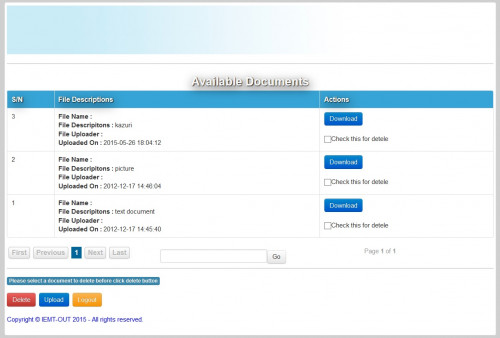
This system enable user to;
1. Log in to the system
2. Upload files
3. Delete files
4. Download files
1. Log in to the system
2. Upload files
3. Delete files
4. Download files
If you are interested on this project please modify it by adding;
1. User manager module
2. User activities tracking module
3. More security features
1. User manager module
2. User activities tracking module
3. More security features
NB: Files are saved in server and only location is saved to database.
USERNAME: admin
PASSWORD: 123456
USERNAME: admin
PASSWORD: 123456
BT - Developers







